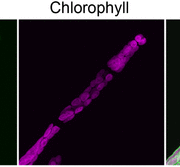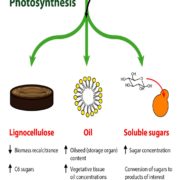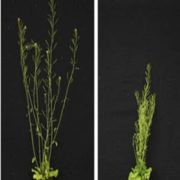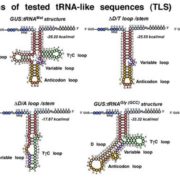
Invisible No Longer: Peptidoglycan in Moss Chloroplasts
Research, The Plant Cell, The Plant Cell: In Brief0 Comments
/
IN BRIEF by Nancy Hofmann [email protected]
Most bacteria have a peptidoglycan layer between the inner and outer membranes (reviewed in Typas et al., 2012). The cyanobacterial endosymbiont that gave rise to plastids would have contained such a peptidoglycan wall including d-amino acids. Indeed, peptidoglycan…

Review: Biotechnology and synthetic biology approaches for metabolic engineering of bioenergy crops
Plant Science Research Weekly, ResearchShih et al. review how the many and diverse tools of plant synthetic biology can be applied towards bioenergy crops, focusing on traits related to lignocellulose, oil, and soluble sugars. Tools include those that edit genes, those that alter protein activities, and those that enable gene stacking in…

Shape-Shifters: How Strigolactone Signaling Helps Shape the Shoot
Research, The Plant Cell, The Plant Cell: In BriefIN BRIEF by Jennifer Lockhart [email protected]
When a deer eats the primary shoot of a plant, this can activate a nearby dormant axillary bud, causing it to form a secondary shoot. Genetic and environmental factors also affect shoot architecture, which strongly influences crop productivity. Changes…

Ticket to Ride: tRNA-Related Sequences and Systemic Movement of mRNAs
Blog, Research, The Plant Cell: In BriefIN BRIEF by Jennifer Mach [email protected]
Movement of macromolecules through the plant phloem provides a mechanism for long-distance signaling that plants use in development, disease resistance, and other adaptive responses (reviewed in Spiegelman et al., 2013). For example, full-length RNAs, such…

